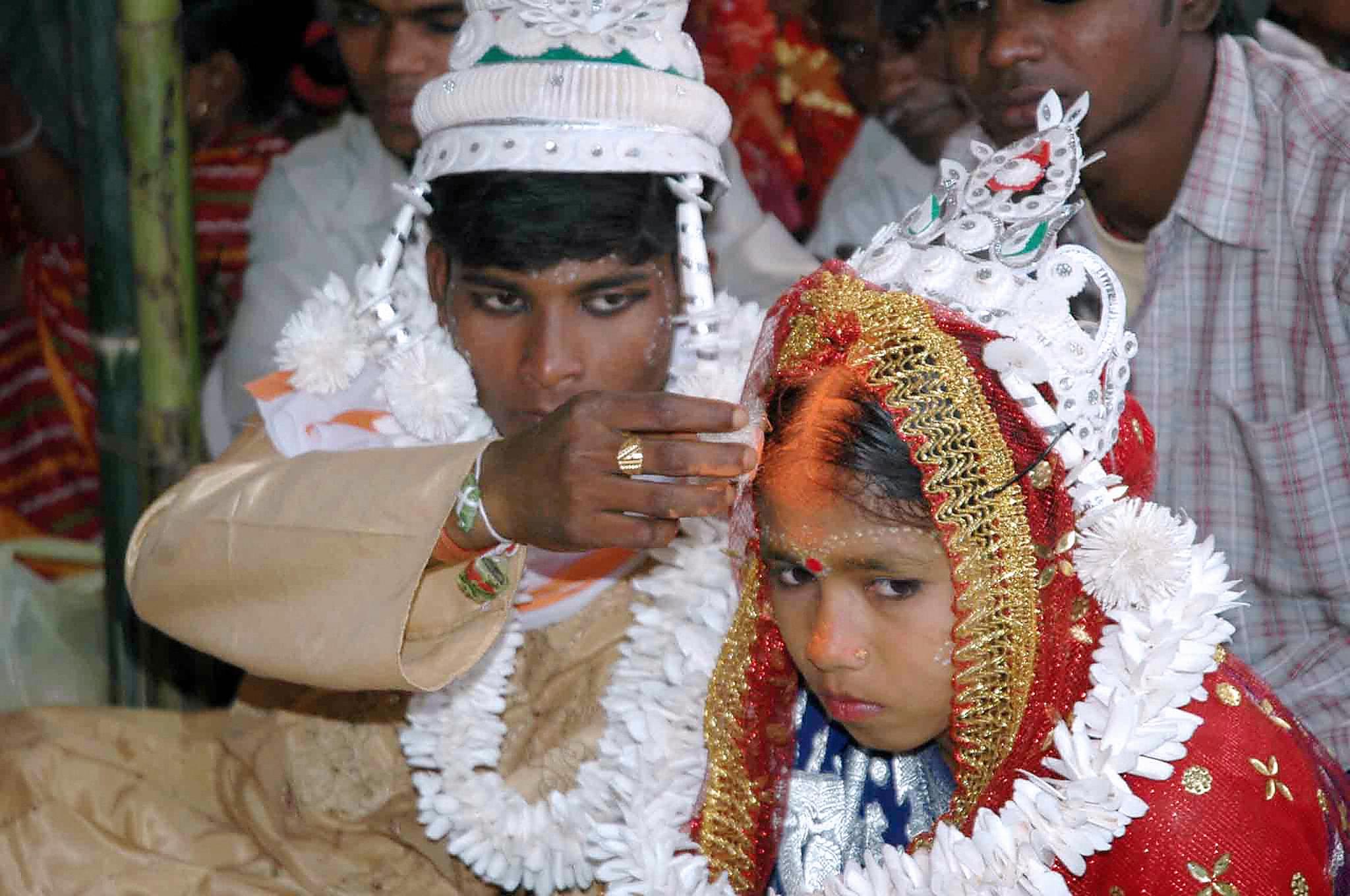Economics
Economic Shocks And Their Impact On Marriage Market
- A recent research paper called “Age of Marriage, Weather Shocks and the Direction of Marriage Payments” shows how economic shocks result in families deferring marriages of their children.
- But can policy makers in India, as the paper suggests, afford to engineer economic shocks to reduce child marriages?

Child Marriage (STRDEL/AFP/Getty Images)
In the early 1980s, Amartya Sen wrote a book which, despite its highly technical nature, became very fashionable amongst the bleeding heart liberals. He said, in the book, that in India hunger was permanent because families tended to feed the men first, then the girls and only in the end the mother. Half the time or more, mothers went to bed hungry.
Reviewing it, former finance minister of West Bengal and a die-hard Marxist, the ever-acerbic Ashok Mitra wrote that Sen was saying what everyone in India knows. He was quite scathing in his review. But even common knowledge needs validation, if not actual proof. This is what a recent research paper called “Age of Marriage, Weather Shocks and the Direction of Marriage Payments” from the redoubtable National Bureau of Economic Research, (NBER) does.
How marriage ‘markets’ work
The paper shows how economic shocks in the form of droughts result in families deferring marriages of their children. Basically, they simply don’t have the money.
The authors, Lucia Corno, Nicole Hildebrandt, and Alessandra Voena of the Università Cattolica del Sacro Cuore, Boston Consulting Group, and the University of Chicago, respectively, have analysed the effect of such shocks in Sub-Saharan Africa and India.
The authors say that the paper is related to questions about how marriage markets work and how they interact with economic outcomes. They show that “where marriage payments are customary, temporary aggregate income shocks lead to substantial shifts in the timing of marriage, particularly at the crucial early ages, in the timing of fertility and in the fertility rate and that “economic policies that modify the incentives to marry in the short run can have lasting effects on women’s marital and fertility outcomes.”
Income shocks and marriage
The authors don’t make the connection with demonetisation. But their assumption of income shocks arising out of droughts can also be extended to the removal of 86 per cent of the currency from circulation. After all, regardless of what causes it, an income shock remains just that: an income shock.
In a system where the bride moves to the groom’s house, a normal economic scenario results in child marriages increasing under the bride price system and decreasing under the dowry system because, to quote, “a man’s parents value future marriage transfers less if they can rely on their son’s economic support in older age, compared to a woman’s parents, who are less likely to benefit from a daughter’s support after she is married”.
In simple terms, if a family has to pay for their daughter getting married they will tend to defer the marriage as much as they can since the girl will, anyway, be moving away from home.
In a man’s case, however, the parents won’t mind paying a bride price since they are gaining a family member and also have the continued economic support of their son. The paper, of course, does not take into account the cultural stigma in India surrounding an unmarried girl and the resultant eagerness to get her married off.
The paper finds that this trend is reinforced in times of droughts that result in a fall in annual crop yields (much like a cash crunch would). During such times of economic shocks, child marriages increase in bride price systems and become less frequent in dowry systems. A fall in income due to external reasons would make a girl’s parents eager to receive a bride price but equally reluctant to pay a dowry.
Marriage by policy?
The authors thus conclude that this phenomenon is instructive for policymakers looking to reduce the incidence of child marriage. While this makes sense for the African nations, where policymakers can design measures to specifically dampen the rise in child marriages during times of economic shocks, it makes little sense for India.
The government can hardly engineer economic shocks in order to bring about a fall in child marriages. A side inference from that – although the paper doesn’t even remotely suggest it – points to a possible benefit of demonetisation, unforeseen by both the government and economic commentators: a reduction in child marriages in India.
One must hope that some researchers will look at the data about marriages – child or otherwise – in the months since 8 November 2016.
Introducing ElectionsHQ + 50 Ground Reports Project
The 2024 elections might seem easy to guess, but there are some important questions that shouldn't be missed.
Do freebies still sway voters? Do people prioritise infrastructure when voting? How will Punjab vote?
The answers to these questions provide great insights into where we, as a country, are headed in the years to come.
Swarajya is starting a project with an aim to do 50 solid ground stories and a smart commentary service on WhatsApp, a one-of-a-kind. We'd love your support during this election season.
Click below to contribute.
Latest